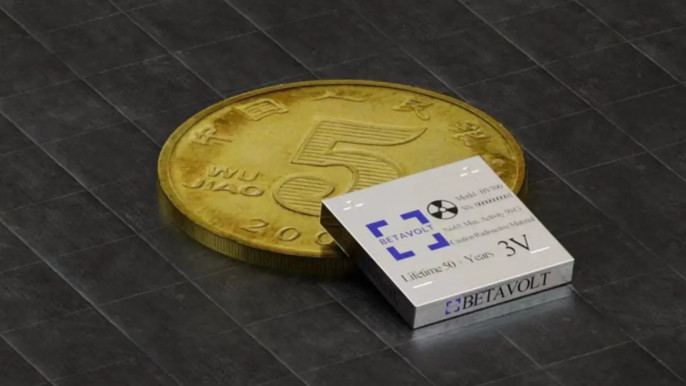A Chinese startup named Betavolt has unveiled a nuclear battery that claims to power smartphones for 50 years without recharging. This groundbreaking technology miniaturizes atomic energy.
Betavolt nuclear batteries generate current through the semiconductor transition of beta particles (electrons) emitted by the radioactive source nickel-63. In order to do this, Betavolt’s team of scientists developed a unique single crystal diamond semiconductor with a thickness of only 10 microns.
Diamond semiconductors belong to the class of Ultra Wide Band Gap (UWBG) semiconductors; their dielectric breakdown strength is at least three times higher than that of SiC devices, and also offers superior thermal conductivity.
A 2-micron-thick nickel-63 sheet was placed between two diamond semiconductor converters to convert the decay energy of the radioactive source into electric current and form a separate unit.
The company assures that such a power source is safe for both humans and the environment: the housing eliminates radiation, and after the expiration date, the nuclear elements will disintegrate. In addition, the development is capable of operating at temperatures from -60°C to 120°C.
The company highlights the battery’s lightweight design, extended service life, and capability to operate in extreme temperatures. Betavolt also addresses radiation concerns, asserting that the battery emits no external radiation and is safe for use in medical devices. The modular design allows multiple atomic batteries to be connected for increased energy output, potentially revolutionizing the electronics industry by eliminating the need for chargers or portable power banks.
Betavolt has registered patents in Beijing and will begin to register global PCT patents. Betavolt has also communicated with Chinese professional nuclear research institutions and universities, and plans to continue to study the use of strontium 90, plethium 147 and deuterium and other isotopes to develop atomic energy batteries with higher power and a service life of 2 to 30 years.






